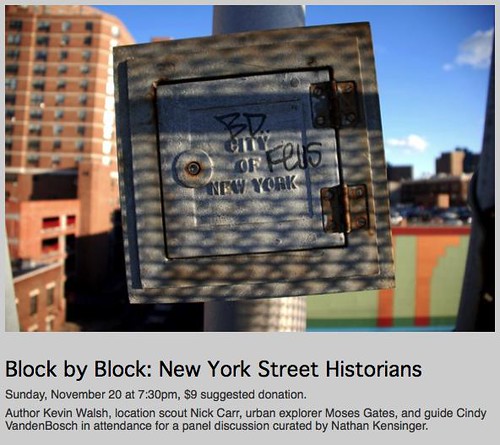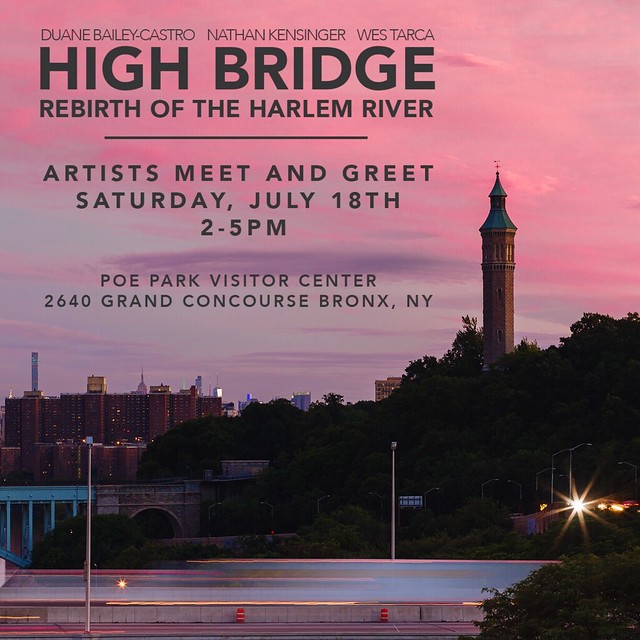Block By Block: New York Street Historians

On Sunday, November 20th, 2011, I curated an event titled "Block By Block: New York Street Historians" at UnionDocs, the documentary collaborative in Williamsburg, Brooklyn. The event was a panel discussion with several "street historians" who are creatively exploring and documenting the city - author Kevin Walsh of Forgotten New York, location scout Nick Carr of Scouting New York, urban explorer Moses Gates of All City New York, and tour guide Cindy VandenBosch of Urban Oyster. "Block by Block" was featured in the Wall Street Journal, Urban Omnibus, and the Brooklyn Paper, and in an article I wrote for PBS 13 WNET's website, MetroFocus. The event was part of a series of UnionDocs panels I am curating - the first, from April 2011, was "Down the Road: Modern New York Street Photographers." More information can be seen at the UnionDocs website.
The following is from my description of "Block By Block":
"In a city as vast as New York, there is always a story waiting to be told, a block waiting to be walked, a building with an unwritten history. Over the past decade, many New Yorkers have been creatively documenting the changing streets of the city on websites and blogs. Often, these modern day storytellers are not historians or authors by training. Their work is part of a tradition of “unofficial,” “informal,” “underground,” and “alternative” histories of New York City. However, after walking through the city block by block, a better title for their work could be “street history.”
The modern New York City street historian can be traced back to George G. Foster, a reporter who explored 1800′s New York as it grew from a town into a modern metropolis. His seminal work, “New York By Gas Light” (1850), is considered a groundbreaking example of urban non-fiction, and presented “the under-ground story – of life in New York,” with portraits of “the festivities of prostitution, the orgies of pauperism, the haunts of theft and murder, the scenes of drunkenness and beastly debauch.”
Foster’s candid explorations of New York’s streetscapes directly influenced the work of many writers in the 1900′s, including Joseph Mitchell – The New Yorker magazine’s “poet of the waterfront,” Herbert Asbury – a reporter who penned a series of “informal” New York histories including “The Gangs of New York,” and Meyer Berger – a Pulitzer Prize winning journalist and “incurable New Yorker” whose colorful New York portraits were published in several collections.
In the same era, several New York street historians physically embraced the challenge of exploring modern New York. For his magnum opus, “History in Asphalt” (1978), amateur historian John McNamara walked, biked or canoed every street in the Bronx, creating an exhaustive encyclopedia of street and place names. His peers include Commander Thomas J. Keane, who completed his walk of every street on Manhattan Island in 1954. Unfortunately, Keane did not keep a diary, but in the next century, Robert Jay Kaufman did, writing “Blockology: An Offbeat Walking Guide to Lower Manhattan” (2005), after walking the 1,544 blocks below 14th Street, a distance of about 300 miles.
Today’s panel brings together four active New York City street historians – a guide, an author, an urban explorer, and a location scout – who are tirelessly exploring the 21st century city, block by block, on their own unique paths - Nathan Kensinger, curator"







